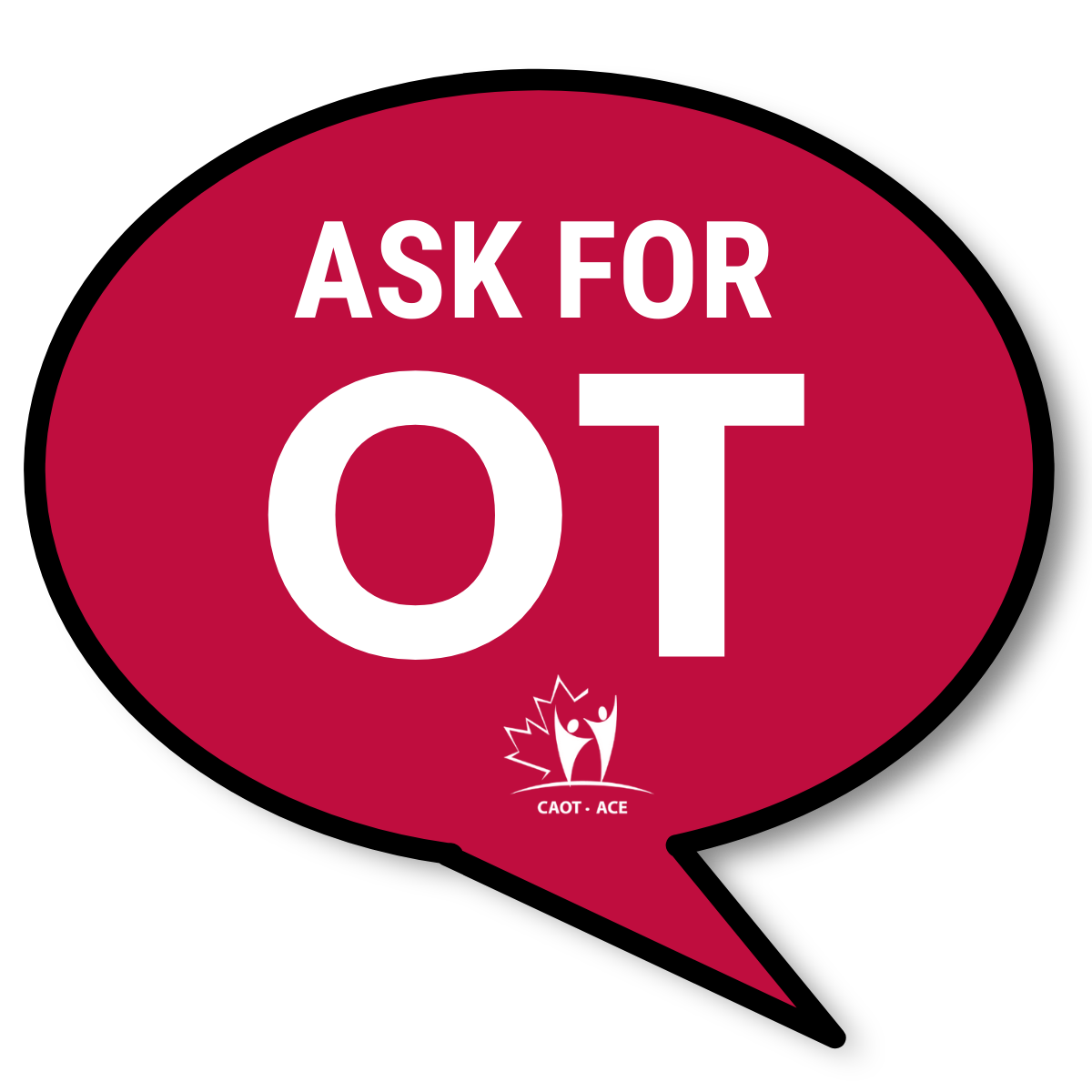The under representation of occupational therapy (OT) coverage in public and private health insurance plans is a major barrier to accessing occupational therapy services. Without coverage, Canadians may not choose occupational therapy or doctors (or other health professionals) may not refer their patients or clients to occupational therapy knowing that there may be financial implications.
Advocating for the inclusion of occupational therapy services within insurance plans is a priority for CAOT. To support this, CAOT:
- Lobbies insurance companies, employers, unions etc. to include occupational therapy in their extended health benefit plans.
- Provides advocacy resources for members.
- Hospitals
- Community health centres
- Rehabilitation centres
- Homes care programs
- Federal government benefits (Canadian Armed Force, Veterans Affairs, Corrections Canada, Indigenous Services Canada)
- Insurance plans (e.g., automotive, long-term disability)
*Please note that to access occupational therapy services, a referral by a physician or another health care provider (e.g., nurse, physiotherapist, chiropractor) may be required.
Canadians can also:- Pay out of pocket for services not covered by a public or private plan.
- Review their extended health insurance plans or employee assistance programs to see if it includes occupational therapy services as a benefit.
However, due to limited coverage of occupational therapy services, most Canadians who would benefit from occupational therapy cannot access it.
If your plan does not cover occupational therapy services, ask your employer to add occupational therapy services to the list of benefit options.
For additional information about occupational therapy and funding, please visit OT Everyday.
 |
CAOT has developed resources to support occupational therapists and clients in their advocacy efforts for the inclusion of occupational therapy services within insurance plans: |
-
This letter template can be used by occupational therapists and clients to request coverage of occupational therapy services in extended health care plans. The letter contains information that demonstrates how access to occupational therapy would benefit employers and employees.
-
We have put together key facts that highlight the need for more comprehensive extended health care plans. These facts can be included in letters and other advocacy efforts undertaken by occupational therapists and clients.
-
This one-page handout provides an overview of the need for better coverage in extended health care plans and how employers and employees would benefit from occupational therapy services. The handout can be used as an advocacy tool at meetings or to accompany a letter requesting for the inclusion of occupational therapy services in extended health care benefit plans.
-
This handout contains real life stories that speak to the impact of lack of coverage for occupational therapy services on the wellbeing of Canadians. The handout can be used to accompany other advocacy resources to illustrate the need for access to occupational therapy.
Share your experience and outcomes on social media. Tag @CAOT_ACE on Twitter and @CAOTACE on Instagram and use #AskforOT. You can also post to the @CAOT.ca Facebook page.
Additional Resources
- Understanding the Insurance Landscape and video - Canadian Life & Health Insurance Association (CLHIA)
- Supplementary Health Insurance Explained for Healthcare Providers - Canadian Life & Health Insurance Association (CLHIA)
- Innovation Change Agency Narrative - Advocating for the Inclusion of OT in a Student Health Benefits Plan - WFOT
At the individual level, occupational therapy:
- Improves management of illness and disability through personalized care strategies.
- Helps clients regain independence after an illness or injury.
- Decreases the risk of disability through preventative strategies.
- Supports the mental and physical health of clients.
Occupational therapy coverage supports employers by:
- Reducing employee absenteeism.
- Helping to increase employee productivity.
- Decreasing the time and spending on disability leave.
- Assisting with employee recruitment and retention.
- Retaining and attracting talent.
Occupational therapy coverage benefits insurers by:
- Reducing the number of claims and payout.
- Reducing costs related to sick leave and disability benefits.
CAOT will continue to collect information/evidence regarding the return on investment for OT services through the Economic Evidence Clearing House e.g., Why invest in mental health OT services?
| |
CAOT Advocacy & Communication Tool |
Contact Us
If you would like to share ideas regarding access to occupational therapy and Extended Health Benefits or if you have suggested resources to add to this page, please contact advocacy@caot.ca.